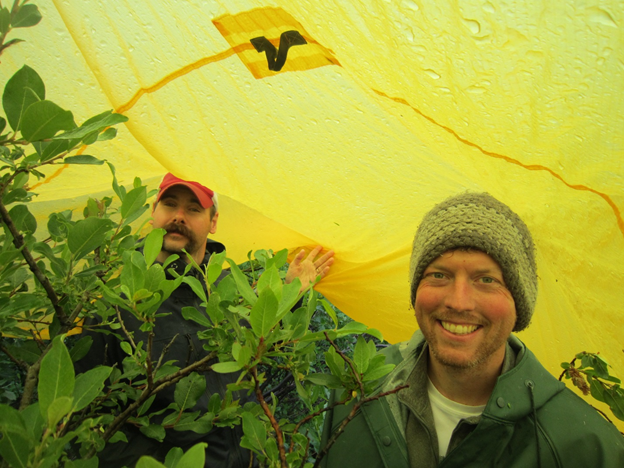Last updated: March 22, 2017
Article
Rediscovering a foundation of ecology: Back to Glacier Bay, Alaska, 100 years later
By Brian Buma (University of Alaska Southeast), Glenn Wright (University of Alaska Southeast), John Krapek (University of Alaska Southeast), and Sarah Bisbing (California Polytechnical State University).
Project Dates
June 20-28, 2016 field work; winter 2016/17 reportingDid You Know?
As glacial retreat exposes bare land surface, plants colonize and develop into changing “communities” that mature over decades and centuries. This process is called “primary plant succession”, and it has been studied here in Glacier Bay for 100 years – the longest-running study of its kind anywhere in the world.Introduction
The process of succession, how plant communities develop through time, is one of the oldest fields of study within ecology. Glacier Bay is a natural laboratory for research on succession, as the rapid retreat of glaciers has left large areas exposed and provided an amazing array of differently-aged landscapes to compare. In 1916 one of the founding fathers of ecology, William S. Cooper from the University of Minnesota, established a series of plots to study plant succession in recently de-glaciated areas in the West Arm of Glacier Bay. [Incidentally, Cooper is also known as the founding father of Glacier Bay, because he headed a group of scientists who successfully lobbied President Calvin Coolidge to set aside Glacier Bay as a National Monument in 1925.] Dr. Cooper followed those same plots for 25 years, revisiting them and charting plant growth and changes in species composition. His student, Donald Lawrence, took over in the 1940’s and continued to follow the plots until the late 1980’s. At that point in time the plots were the longest-running study of their kind in the world, but their locations were lost after Lawrence’s death, seemingly ending the legacy.
Methods
In 2016 researchers used a combination of hand-drawn maps from 1916, compasses, models to adjust for magnetic declination changes, field notes, historical photographs, kayaks, and metal detectors to relocate the original plots. Each plot was re-described by identifying, counting, and mapping each individual plant within it, successfully extending the original Cooper study into its 100th year. The research was funded by the National Geographic Society, the University of Alaska Southeast, and logistical support was provided by the National Park Service.
Findings
The plots show a less predictable pattern of succession than similar plots elsewhere in Glacier Bay. Many of the plots were invaded early (1920’s) by willows (Salix species), and those willows are still present. Other species later-successional species such as alder and spruce are rarer, a surprise given that the land surface is now approximately 130 years old. While plots have shown a general increase in the number of species with time (increasing biodiversity), the plots closer to the mouth of Glacier Bay (farthest from the glaciers and thus older) have shown the greatest increase. We think both patterns are because many plants have difficulty dispersing the great distances to the upper reaches of the Bay, and early pioneer species like willows have been able to almost completely monopolize resources and resist invasion by other species, at least for the first 130 years or so.This record provides a unique opportunity for researchers to utilize a 100-year record of plant change, available nowhere else in the world, to ask fundamental ecological questions. As global warming and climate change continue, for example, these processes will become more and more relevant.






